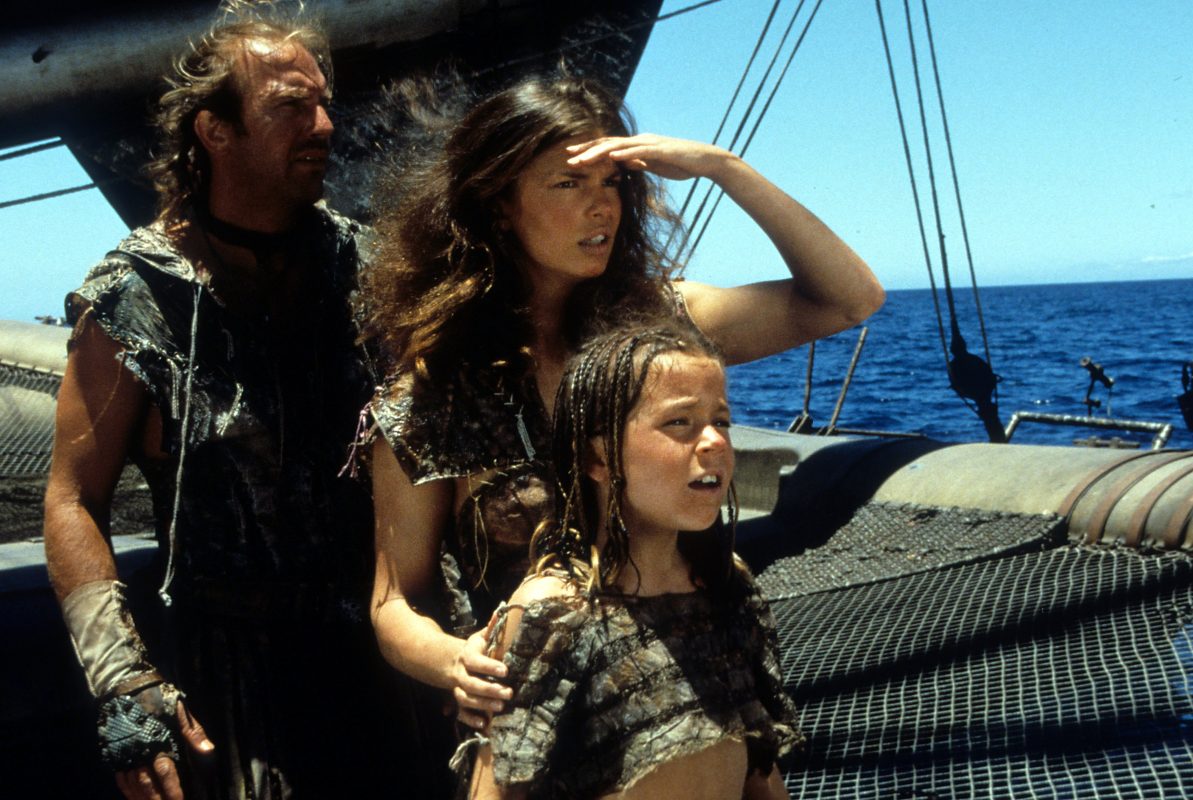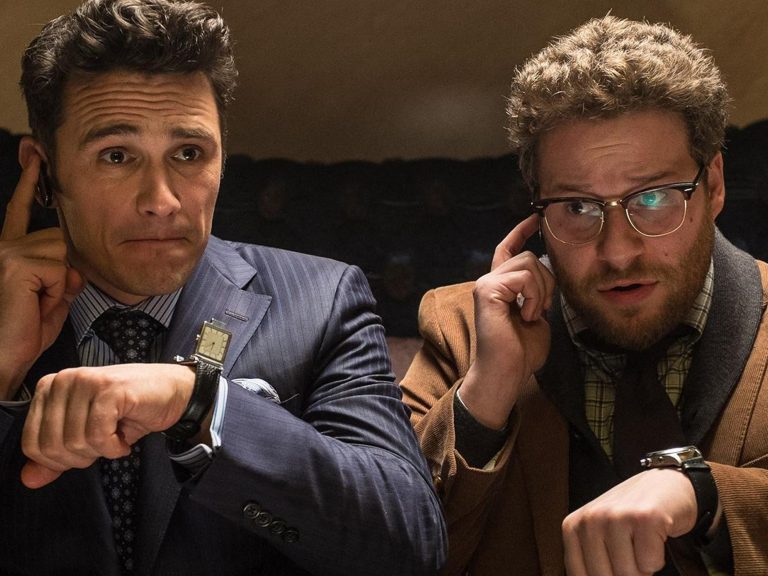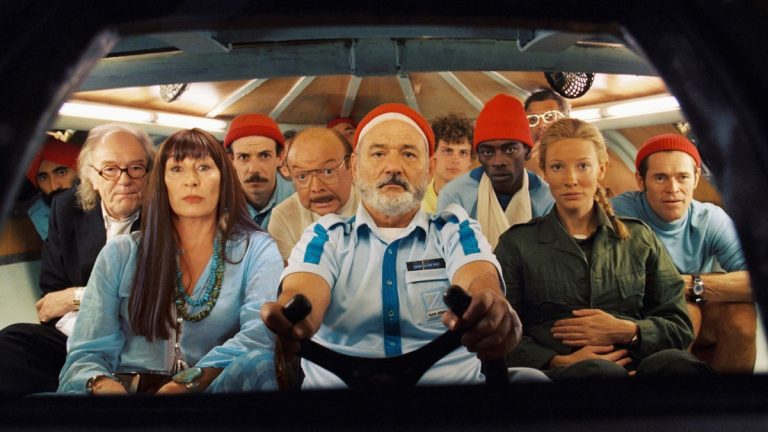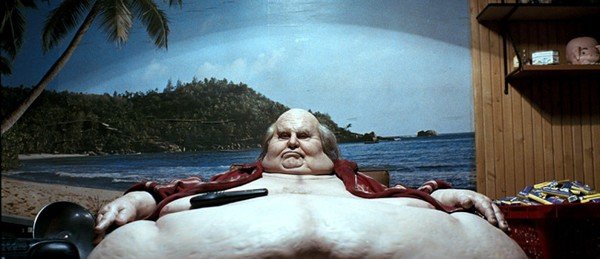Over the past thirty years, reporters have repeatedly seen the word “bomb” unfairly attached to “Waterworld” (1995). As someone who has worked in Hollywood for over three decades, I would like to help set the record straight, not just as a viewer, but as someone who understands the industry’s inner workings, the risks of filmmaking, and the courage it takes to bring a vision to life amidst chaos.
On this thirtieth anniversary of the release of “Waterworld,” entertainment outlets have dredged up old headlines, reviving the tired claim that “Steven Spielberg warned Kevin Costner about shooting on water.” Let us put that statement into perspective. Spielberg is undeniably one of cinema’s greatest visionaries, a filmmaker who knows how to move both the audience and the camera, but he is not an oracle. If foresight were truly possible in filmmaking, he might have predicted the hurricane that destroyed his “Jurassic Park” set in Kauai, a production that was on land. Nature does not care about film budgets, production schedules, or the reputations of studio executives.
“Waterworld” is far from the only movie to face environmental and logistical disasters. Ridley Scott’s “Legend” nearly fell apart when a fire destroyed its elaborate forest set at Pinewood Studios. Francis Ford Coppola’s “Apocalypse Now” spiraled into infamy during its production in the Philippines, plagued by storms and endless delays. Yet both of those productions, once mired in chaos, have since risen to the status of cinematic classics. Time has a way of changing perception, and “Waterworld” deserves that same re-evaluation.
This raises a larger question: Does it truly matter whether a filmmaker chooses to shoot on land, at sea, or anywhere else? Creative vision collapses the moment it surrenders to fear of the unknown. Cinematic innovation has always come from those willing to take big risks. It is easy, decades later, to point fingers or mock bold choices. But at the time, “Waterworld” was a daring leap into uncharted territory, a fully realized post-apocalyptic world where the seas had swallowed the Earth.
Kevin Costner did not simply star in “Waterworld”; he saved it. When director Kevin Reynolds walked away mid-production due to creative differences, Costner stepped in to ensure the film’s completion. Few actors/producers would have had the stamina or determination to shoulder that kind of responsibility.
At the same time, Universal Studios was undergoing a major corporate transition, and the incoming executive team shifted creative priorities midstream. Despite these enormous challenges, Costner kept the project afloat both literally and figuratively. He worked tirelessly, editing day and night, ensuring that the movie hit both its new requirements and its release date. That kind of leadership and dedication is rarely acknowledged, yet it is precisely what kept “Waterworld” from becoming a genuine disaster.
Calling “Waterworld” a “failure” ignores both context and long-term results. At its 1995 release, its $170 million budget made it the most expensive movie ever made, a staggering figure for its time. But in today’s cinematic landscape, where blockbusters like “Avengers: Endgame” and “Avatar: The Way of Water” cost more than double or triple that, the number seems almost quaint. Expectations were undeniably high, but “bomb” simply is not an accurate label. The film earned over $260 million worldwide in its initial run and continued to generate revenue for decades through home video, licensing, and theme park tie-ins.
If we are going to talk about cinematic failures, let us be honest about what that means. True “bombs” are films that never make their production budget back, productions like “Heaven’s Gate,” “Battlefield Earth,” or, more recently, “Here” (2024) by Robert Zemeckis, which cost tens of millions and failed to find an audience. “Waterworld” did not just recover its costs; it became profitable. That is not failure, that’s survival in one of the toughest industries on Earth.

Also Read: 30 Best Sci-Fi Movies of the 21st Century
Creative vision shatters the instant it bows to fear of the unknown. Studio chaos, weather delays, and production difficulties could have easily sunk it. Instead, “Waterworld” premiered on schedule, in theaters worldwide, and went on to become part of film history. That alone is an accomplishment few appreciate.
Even more impressive is Waterworld’s enduring legacy. The “Waterworld” stunt show at Universal Studios Hollywood became one of the park’s most popular attractions, running for decades across multiple Universal parks worldwide. It introduced the story to millions of new fans, many of whom had not even seen the movie. The show’s continued success is proof that the world Costner helped create still captures imaginations.
Anyone who understands the business knows that box office receipts tell only part of the profitability story. Once home entertainment, global television rights, video games, and merchandise entered the picture, “Waterworld” proved itself as a long-term moneymaker for the studio. The film’s afterlife demonstrated what insiders already knew: sometimes the loudest critics are the least informed about how Hollywood accounting truly works.
But even beyond the financial numbers, “Waterworld” stands for something far more important: artistic courage. Kevin Costner has always represented a rare kind of filmmaker, one who bets on originality and vision over safety. “Dances with Wolves,” “Open Range,” and “Horizon: An American Saga” all share that same DNA, films that take risks in pursuit of storytelling truth. In “Waterworld,” that courage translated into building an entire floating civilization, filming on open seas, and blending adventure with environmental commentary long before climate awareness became mainstream.
As we mark the 30th anniversary of “Waterworld,” it is time to reframe the conversation. The film was not a “bomb.” It was an ambitious, imaginative experiment that pushed the boundaries of what was possible in 1990s filmmaking. It succeeded in ways that statistics alone cannot capture. Moreover, it pioneered groundbreaking techniques for filming on water, built an unforgettable post-apocalyptic world, and proved how far determination and creative conviction can go when the odds are impossible.
What is disappointing today is seeing modern publications join the “bash Kevin Costner” bandwagon instead of recognizing his contributions to cinema. Costner’s body of work reflects not just star power, but vision, the willingness to build worlds, not just act in them. If we want Hollywood to keep making original stories rather than endless reboots and superhero sequels, we must start celebrating the risk-takers, not punishing them.
Because without risk, there is no innovation. And “Waterworld,” thirty years later, still stands as a testament to that truth; it is a bold, buoyant triumph against the tide.







